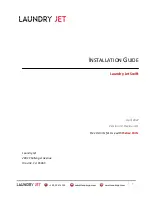
1
WARNINGS
THESE INSTRUCTIONS ARE ONLY VALID FOR THE COUNTRIES OF DESTINATION WHOSE SYMBOLS ARE SHOWN IN
THE BOOKLET AND ON THE APPLIANCE RATING PLATE.
Congratulations for choosing an Ariston appliance, which you will find is dependable and easy to use. We recommend you
read though this booklet for the best performance and to extend the life of your appliance. Thank you.
1. This appliance has been designed for private, non-
professional domestic use in the home.
2. Read this instruction booklet carefully, as it provides
important advice regarding safe installation, use and
maintenance. Keep this booklet in a safe place for
future reference.
3. The oven accessories that may come into contact with
food are made of materials which comply with the
provisions set forth by the EEC Directive 89/109 of 21/
12/88 and the applicable national norms in force.
4. After removing the packaging, check that the appliance
is intact. If in doubt, do not use the appliance and contact
a qualified serviceman.
5. Some parts are covered with a removable scratch-proof
film. Before using the appliance, the film should be
removed and the underlying part cleaned with a cloth and
a non-abrasive household cleaning product. When
switching on the appliance for the first time, we
recommend you heat the oven at the maximum
temperature setting for about 30 minutes with nothing in
it to eliminate any residue from manufacture.
6. All installation and adjustment operations should be
carried out by a qualified serviceman in accordance with
the applicable norms in force. Specific instructions are
provided in the section intended for the installer.
7. Before connecting the appliance, make sure that the data
on the rating plate (situated underneath the appliance and
on the last page of this instruction booklet) correspond to
the mains electricity and gas supplies.
8. During operation, the oven glass door and adjacent parts
of the appliance become hot. Make sure, therefore, that
children do not touch the appliance.
9. Check that the capacity of the electrical system and the
power outlets are suitable for the maximum power of the
appliance, indicated on the rating plate. If in doubt, consult
a qualified technical engineer.
10. Check the condition of the gas connection pipe regularly
and have it replaced by a qualified technical engineer as
soon as it shows any signs of wear or anomaly.
11. Under no circumstances should the user replace the power
supply cable or the gas connection pipe of this appliance.
In the event of damage or the necessity for replacement,
contact an authorised service centre only.
12. Do not leave the appliance plugged in if it is not in use.
Switch off the main switch and turn off the gas supply
when the appliance is not in use.
13. The burners and the cast-iron pan supports remain hot
for a long time after use. Do not touch them.
14. To avoid accidental spills, do not use cookware with
uneven or warped bottoms on the burners.
15. Never use flammable liquids such as alcohol or gasoline,
etc. near the appliance when it is in use.
16. If the cooker is placed on a pedestal, take the necessary
precautions to prevent the same from sliding off the
pedestal itself.
17. If the appliance is fitted with a lid, any boiled over liquid
should be removed from the hob before shutting it.
18. Where present, do not shut the lid if the hob is still hot.
19. do not use steam cleaners to clean your oven
Disposal of old electrical appliances
The European Directive 2002/96/EC on Waste Electrical and
Electronic Equipment (WEEE), requires that old household
electrical appliances must not be disposed of in the normal
unsorted municipal waste stream. Old appliances must be
collected separately in order to optimise the recovery and
recycling of the materials they contain and reduce the impact
on human health and the environment. The crossed out
“wheeled bin” symbol on the product reminds you of your
obligation, that when you dispose of the appliance it must be
separately collected.
Consumers may take their old appliance to public waste
collection areas, other communal collection areas, or if national
legislation allows return it to a retailer when purchasing a similar
new product.
All major household appliance manufacturers are active in
the creation of systems to manage the collection and disposal
of old appliances.










































